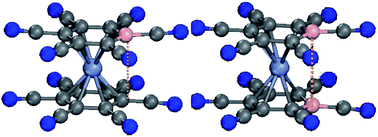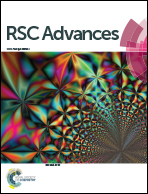Unusual stability of multiply charged organo-metallic complexes
Abstract
Stabilization of multiply charged ions in the gas phase has been one of the most fundamental challenges in chemistry since it is hindered either because of fragmentation or auto-electron detachment. Closo-borane B12H122− is among the best known multiply charged di-anion in chemistry where the second electron is bound by 0.9 eV. We show that transition metal based organo-metallic di-anions such as Cr[BC5(CN)6]2 can be even more stable than B12H122− where the second electron is bound by 2.58 eV. This is in contrast to C6H6 which is unstable even as a mono-anion. The unusual stability of the organo-metallic complex is brought about by having the added electrons simultaneously satisfy three separate electron-counting rules, namely the octet rule, the aromaticity rule, and the 18-electron rule. Mono-anionic Mn[BC5(CN)6]2 which is isoelectronic with di-anionic Cr[BC5(CN)6]2 is also found to be very stable. The design of unusually stable singly and multiply charged organo-metallic negative ion complexes in the gas phase opens the door to the synthesis of new salts with potential applications as organic cathodes and electrolytes in Li ion-batteries and beyond. Equally important, electron counting rules can be used effectively to guide the synthesis of electronegative species beyond super- and hyperhalogens, and hence opening the door for new oxidizing agents.


 Please wait while we load your content...
Please wait while we load your content...